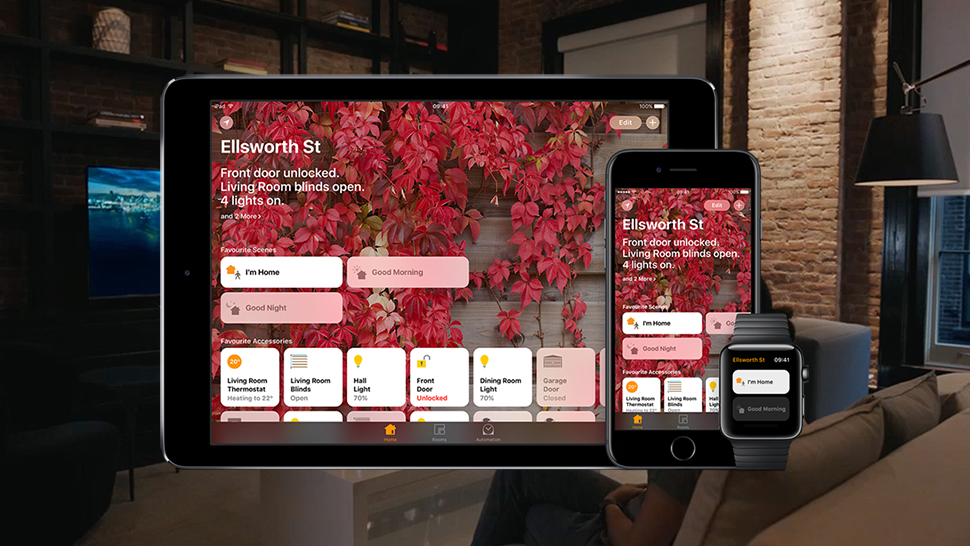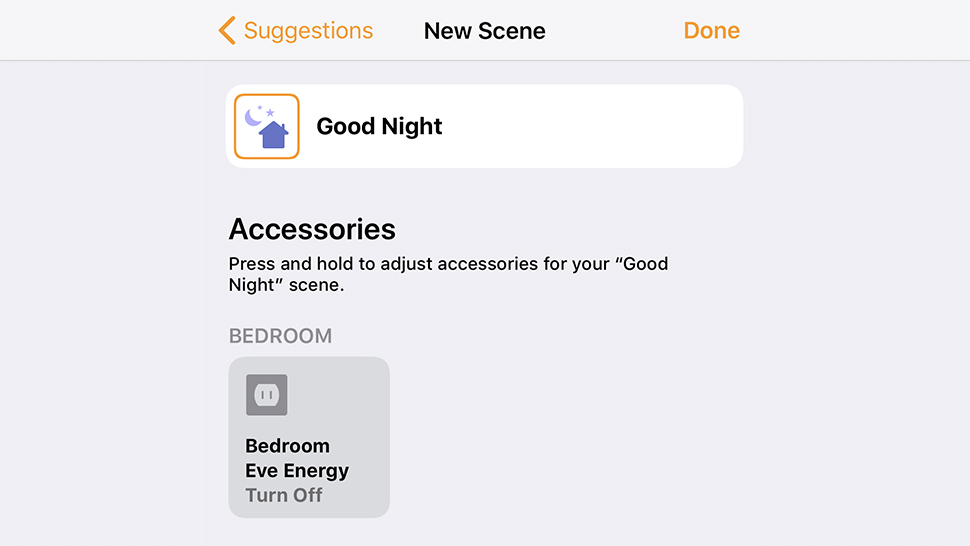Putting Apple's HomeKit smart home platform to the test
Has the future arrived?


HomeKit was unveiled by Apple along with iOS 8 back in 2014, and yet there's still a scarcity of homes humming along with HomeKit-enabled appliances. Is it worth investing in the tech yet? Or do potential smart home owners need to give HomeKit more time?
To investigate the current state of HomeKit, we gathered together some Apple devices, some HomeKit-ready gear, and set it all up - here's what we found, and what we think your best options are if you're considering using HomeKit in your own place of residence.
What you need

You might not spot HomeKit in many of your friends' or relatives' houses, but there's certainly plenty of compatible hardware out there now - take a look at the official Apple Store for a sampler. As well as the smart gear itself, you need an iOS device to control it.
You've got smart buttons from Logitech, security cameras from D-Link, Hue lights from Philips, thermostats from Honeywell, and a host of other accessories from Elgato, some of which - like a smart plug and an air quality detector - we've used in this guide.
What you won't find are any of Apple's big rivals supporting HomeKIt, for competitive reasons - you can't hook it up to anything in Samsung's SmartThings range, or to your Amazon Echo, or to a thermostat from Google subsidiary Nest. Each of these companies wants to push their own platform, which means less kit for consumers to pick from.
If you want to do some advanced HomeKit tricks, such as setting up automated actions for certain times of day, then you need an Apple device to act as a hub - at the moment, that has to be either an Apple TV or an iPad. If you're only using HomeKit with an iPhone, you miss out on the automation extras, though you can still control devices individually and in groups.
Setting up HomeKit devices

We're pleased to report that setting up HomeKit devices is a breeze: they all come with a special code printed on them, so you launch the Home app, point your iPhone (or iPad) camera at the code, and after a couple of seconds it's recognised and connected.
Get all the latest news, reviews, deals and buying guides on gorgeous tech, home and active products from the T3 experts
You then tell the Home app a few extra details, like the room the device is in, and you're up and running. We had our Elgato Eve Room sensor and Elgato Eve Energy switch measuring temperatures and turning lights on and off without any trouble at all, and configured a Logitech Pop button to control a few devices too. Everything is neatly handled inside the Home app on iOS, though you can often (as is the case with Elgato) install a second app from the manufacturer to add a few extra bells and whistles.
You can also create Rooms inside the app, which group accessories by their location, and Scenes, which are groups of settings based on a particular event - so you might want to turn all lights and power off when you go to bed, for example.
Again, creating Scenes was simple and straightforward inside the app, and we quickly had our lights going off at the end of the day and coming on in the morning. It only takes a few taps, and if you don't like the default Scenes the app suggests for you, you can create your own - you just pick your accessories and the relevant settings.
Setting up a HomeKit hub

So why do you need an Apple TV or an iPad again? Well, if you want to do anything on a schedule (turn on at 8am) or in response to something (lights on if motion is detected) or control your smart home remotely (turn down the temperature from work) you need a HomeKit hub up and running, which means an iPad or an Apple TV.
In some cases you can use the individual apps that come with your HomeKit gear to partly automate your smart home, but we'd recommend a hub to tie everything together - tapping your phone to turn on the lights is impressive, but not as impressive as having them come on when you motor up the driveway.
We used an Apple TV as our hub, and you don't actually have to do anything except sign into your iCloud account on the black box, as long as you've got two-factor authentication set up with your Apple ID (Apple has full instructions here). The setup couldn't be easier and configuring some automated commands is a lot of fun too.
You're limited by the HomeKit hardware you have, of course, but you can quickly have your accessories working together and your Scenes turning on and off on a schedule without too much trouble. Perhaps the only issue we came across was that some HomeKit gear works via Wi-Fi and some with Bluetooth, and if you're using devices that make use of Bluetooth then the hub needs to be close enough to connect (presumably that's not a problem with Wi-Fi if it stretches all through your home).
The state of HomeKit

Having never used HomeKit before, we were surprised at just how easy it is to set everything up and start controlling our home appliances as if by magic - you can even use Siri to control everything with your voice if tapping on your iPhone's screen is too much trouble. Whatever's holding back HomeKit, it's not a steep learning curve.
What was also impressive was how you could start small - if you just want to buy one smart light and connect it up, you can. There's no need to go full smart home straight away if you don't want to, though you do need a hub for the automation aspect.
That said, we should mention that several reviews on the web have talked about buggy behaviour and connectivity issues. While we didn't experience any ourselves with our Elgato and Logitech kit, it's obviously not been plain sailing for everyone. Over time though, these bugs and inconsistencies should go away, and three years on from its launch HomeKit looks in pretty good shape.
Perhaps most of us are just not ready to jump into the smart home age yet - how often do you upgrade your desk lamp, after all? While the benefits of something like a smart thermostat are obvious, controlling your lights remotely or being able to start the kettle from the floor above (!) are maybe not that high on people's list of priorities when it comes to the next set of gadgets they're going to invest in. Consoles, phones, TVs all cost serious money, so maybe smart home devices just aren't compelling enough yet.
Like everything else Apple makes, it's a very locked-in system, which might be putting more people off - if you're going to switch to an Android phone in a couple of years, you'll suddenly be unable to control your smart home. We were impressed with HomeKit during our testing, but we can still see the reasons why people aren't jumping on board just yet.
Dave has over 20 years' experience in the tech journalism industry, covering hardware and software across mobile, computing, smart home, home entertainment, wearables, gaming and the web – you can find his writing online, in print, and even in the occasional scientific paper, across major tech titles like T3, TechRadar, Gizmodo and Wired. Outside of work, he enjoys long walks in the countryside, skiing down mountains, watching football matches (as long as his team is winning) and keeping up with the latest movies.
